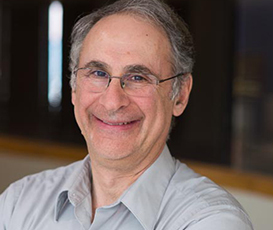Richard J. Cohen, the Whitaker Professor in Biomedical Engineering in the MIT Institute for Medical Engineering and Science (IMES) and a faculty member in the Harvard-MIT Program in Health Sciences and Technology (HST), has seen a lot during his years at MIT. He is a rare “MIT lifer,” rising from student to senior faculty member and spending half a century at the Institute.
Cohen joined HST as a first-year medical student in 1971 and then inaugurated the MD/PhD track by enrolling in the MIT physics PhD program — receiving both degrees in 1976. He joined IMES, the current home for HST, when it was founded in 2012.
Throughout his career, Cohen has exemplified the role of physician-scientist, dedicating his efforts to research, teaching, and service at the interface of science and medicine. Upon receiving his graduate degrees, he continued both his academic and medical training, joining the medical research residency program at the Peter Bent Brigham Hospital (which later became part of the Brigham and Women’s Hospital) while also conducting postdoctoral research at MIT. After his residency, he became an HST faculty member at MIT and continued his clinical cardiology training at the Brigham and Women’s Hospital, going on to serve as an associate physician for 25 years.
Cohen’s research has revolved around the application of physics and engineering to solving problems in biology and medicine, particularly in the cardiovascular area. His work ranges from computer simulations to animal studies to clinical investigations, and he has published more than 270 scientific papers and has been issued 39 U.S. patents.
Now, Cohen has announced his retirement and will officially transition to emeritus status within IMES on March 1.
One technology developed in the Cohen Lab was the measurement of microvolt T-wave alternans to identify patients at risk of sudden cardiac death. This technology was commercialized, cleared by the U.S. Food and Drug Administration, and gained reimbursement under Medicare.
Cohen directed the HST Biomedical Engineering Center from 1985 to 1995. From 1994 to 2000 he directed the NASA Center for Quantitative Cardiovascular Physiology, Modeling, and Data Analysis at MIT. He served as the team leader of the Cardiovascular Alterations Team of the National Space Biomedical Research Institute from 1997 to 2006.
During his time at IMES and HST, Cohen has been an innovator in medical education, directing a number of the core courses in the HST curriculum including HST.090/HST.091 (Cardiovascular Pathophysiology) and HST.151 (Principles of Pharmacology). He has also served as HST lead for joint educational programs with the MIT Sloan School of Management. He served, for example, as the co-director of the Biomedical Enterprise Program from 2004 to 2012. Students in this program obtained an MBA degree and an SM degree in health sciences and technology, as preparation for leadership positions in the biomedical industry. Since 2013, Cohen has been one of the three members of the committee that directs the continually growing Sloan Healthcare Certificate program, and he has taught two courses as part of this program: 15.132 (Medicine for Managers and Entrepreneurs Proseminar), and 15.124J (Evaluating a Biomedical Business Concept).
Cohen says that IMES and HST have been a “wonderful professional family, inside MIT, of which to be a member” and that they have “provided me the best environment I could ever have hoped for in which to develop a career. I always felt free to pursue my research interests; the faculty were universally supportive of me and of each other; and the students, postdocs, and staff were all outstanding.”
Anantha Chandrakasan, dean of the MIT School of Engineering and Vannevar Bush Professor of Electrical Engineering and Computer Science, lauds Cohen’s contributions, saying: “Richard has had a tremendous impact on the IMES community and many areas of MIT. I am grateful to Richard for his leadership and mentorship, and for his many contributions to MIT.”
Elazer R. Edelman, director of IMES, notes that “Richard has been a personal hero for decades. He led the way for generations of students and faculty. He welcomed many of us to the program, me included. He taught us in class and by example at every stage of our careers. His leadership and innovation provided direction and stability that took a fledgling initiative and made it the premier program of its kind.”
Upon his retirement, the endowed faculty chair, funded with the sale of MIT’s stock in Cambridge Heart, a company that he founded, will become the Richard J. Cohen (1976) Professorship in Medicine and Biomedical Physics.
Of this endowed chair, Cohen says, “It gives me the greatest satisfaction to know that, as a consequence of my activities, IMES will permanently have an additional faculty chair supporting teaching and research central to its mission.”






